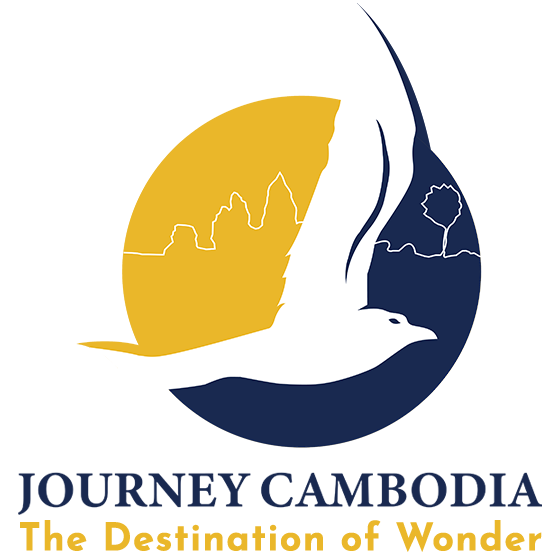Trips to Angkor Wat – From sunrise views to quiet corners—here’s how to do it right without the stress.
Start your day right and leave with stories you’ll talk about forever.
From sunrise views to quiet corners—here’s how to do it right without the stress. Start your day right and leave with stories you’ll talk about forever.
Trips to Angkor Wat mix wonder and challenge. This huge temple site needs smart planning. You’ll see amazing carvings, tall towers, and feel the power of Cambodia’s past.
Why Angkor Wat Should Top Your Travel List
Angkor Wat tops bucket lists for good reasons. It sits as the world’s largest religious monument, built in the 12th century during the reign of King Suryavarman II. The site started as a Hindu temple for the god Vishnu before changing to a Buddhist temple. Now it stands as a powerful symbol of Cambodian history and culture.
The Angkor Archaeological Park spans a huge 401 square kilometers with 91 ancient temples according to recent reports. UNESCO named it a World Heritage Site in 1992, which helped save these amazing structures.
Most travelers fly into Siem Reap, a city that grew from a small town into a busy tourist hub with many hotels and restaurants. From there, it’s a short drive to the temple complex.
Key Facts About Angkor Wat:
- Built in the early 12th century
- World’s largest religious monument
- UNESCO World Heritage Site since 1992
- Main reason many people visit Cambodia
- Located near Siem Reap city
- Covers 401 square kilometers with 91 temples
Planning Your Trip to Angkor Wat in 2025
1. Best Time to Visit Angkor Wat
Timing matters when planning trips to Angkor Wat. The cool season (November to February) brings better weather but more crowds. The hot season (March to May) can be very hot with temps over 95°F. Rainy season (June to October) gives you green views and fewer tourists, but expect afternoon showers.
For a truly special time, the spring equinox (March 21-23) brings a visitor surge when the sun aligns perfectly with the temple’s design. This creates amazing photo chances but also means more crowds.
Tourist numbers vary by season:
- Peak Season (Nov-Feb): Cooler temps, biggest crowds
- Hot Season (Mar-May): Very hot, medium crowds
- Rainy Season (Jun-Oct): Afternoon rain, fewer tourists
2. Ticket Options and Prices
Angkor Wat tickets come in three types as of 2025:
- 1-day pass: $37
- 3-day pass: $62 (valid for 10 days)
- 7-day pass: $72 (valid for one month)
In January 2025, they added self-service ticket machines to make the process faster. This cuts down long lines that used to form at ticket booths. You need your physical ticket with you at all temple entrances.
Get Your Angkor Ticket Now – 5 Spots That Save You Hours! The Angkor Park Pass Ticket Counters
NOTE: A new red gravel path from the ticket area to the eastern gate makes walking easier, with a nice crosswalk bridge. This helps visitors move around better.
Top Tour Options for Angkor Wat in 2025
1. Angkor Wat Highlights and Sunrise Guided Tour
The Angkor Wat Sunrise Tour ranks as one of the most popular choices. You’ll leave your hotel before dawn (around 4:30 AM) to catch the sun rising behind Angkor Wat’s iconic silhouette.
What makes this tour special:
- Unique entry point: The tour uses the less crowded eastern entrance
- Expert timing: Guides know the best spots for perfect sunrise photos
- Half-day format: Ends by early afternoon so you avoid the hottest part of day
- Key temples: Covers Angkor Wat, Ta Prohm, Angkor Thom, and Bayon Temple
This specialized tour has become very popular with photographers and travelers seeking a more special experience than standard daytime visits. The half-day timing works well in Cambodia’s hot climate.
2. Sunset in Angkor Wat Golden Hour Tour
For those who prefer later starts, the Sunset in Angkor Wat tour offers a different but equally amazing experience. This tour visits temples in reverse order from most others.
Tour highlights:
- Starts at 9:45 AM (no pre-dawn wake-up call)
- Visits Angkor Thom first, then Ta Prohm
- Saves Angkor Wat for last during “golden hour” (3:00-6:00 PM)
- Offers unique photo chances with fewer crowds
- Exits through the less-used eastern gate
The golden hour lighting provides perfect conditions for seeing and photographing architectural details. You get three full hours at Angkor Wat itself, more than most standard tours offer.
3. Angkor Wat Sunset Tour
The Angkor Wat Sunset Tour gives you a full day of temple exploring with a beautiful ending as the sun sets. This comprehensive option runs from 8:00 AM to around 6:30 PM.
Why choose this tour:
- Full day experience: Maximizes your temple time
- Five major sites: Includes Angkor Wat, Ta Prohm, Angkor Thom, Bayon Temple, and Phnom Bakheng
- Comfort features: Air-conditioned van, cold water, and cool towels included
- Expert guides: English-speaking guides share historical and cultural info
This tour shows how to balance seeing many temple sites while still having a memorable sunset finish. The added comfort items help deal with Cambodia’s hot weather.
4. Siem Reap Airport Transfers
Don’t forget about Siem Reap Airport Transfers when planning trips to Angkor Wat. A smooth arrival sets the tone for your whole visit.
Transfer benefits:
- Stress-free arrival after a long flight
- Skip taxi negotiation
- Air-conditioned vehicles
- English-speaking drivers
- Direct hotel drop-off
Journey Cambodia offers both private and shared transfer options to fit different budgets.
Must-See Temples During Your Angkor Visit
1. Angkor Wat Main Temple
The star of any trips to Angkor Wat is of course the main temple itself. This massive structure sits surrounded by a wide moat and features five lotus-shaped towers. The carvings inside tell stories from Hindu epics and Khmer history.
Don’t miss:
- The long bas-relief gallery showing scenes from the Ramayana
- The central tower (requires climbing steep stairs)
- The Churning of the Ocean of Milk carving
- The Apsara dancer carvings (over 3,000 throughout the temple)
A key shift in management now looks at the entire ecosystem surrounding Angkor rather than just the buildings. This connects the temples, water systems, forests, and local communities.
2. Ta Prohm (The “Tomb Raider Temple”)
Made famous in movies, Ta Prohm temple shows the power of nature as huge trees grow through and around the stone structures. Unlike other temples that were cleared of jungle, Ta Prohm was left partly as found.
Photo spots:
- The “Tomb Raider doorway” with the tree roots
- The Hall of Dancers
- The crocodile tree carving
- The jungle pathways surrounding the main buildings
3. Bayon Temple
Known for its 216 stone faces, Bayon Temple sits at the center of Angkor Thom, the last great capital of the Khmer Empire. The faces might show King Jayavarman VII, who built the temple, or a mix of his face with the Buddha.
Key features:
- The face towers looking in all directions
- The bas-reliefs showing daily life in ancient Cambodia
- The central sanctuary
- The hidden passages and small rooms
4. Phnom Bakheng
This temple mountain offers some of the best views in the Angkor Archaeological Park. Built on a natural hill, Phnom Bakheng was the first major temple built in the Angkor area.
Visitor tips:
- Limits exist on how many people can climb at sunset (300 max)
- Arrive 2 hours before sunset to get a spot
- The climb is steep – wear good shoes
- Bring a flashlight for the walk down after sunset
Sunrise in Angkor Wat – The Perfect Start to an Unforgettable Adventure
Practical Tips for Trips to Angkor Wat
1. What to Wear and Bring
Dress code matters during trips to Angkor Wat. The temples are active religious sites that require modest dress.
Essential packing list:
- Clothes covering shoulders and knees (required for temple entry)
- Comfortable walking shoes (you’ll walk 5+ miles in a day)
- Hat and sunglasses
- Sunscreen (SPF 50+)
- Mosquito repellent
- Reusable water bottle (reduce plastic waste)
- Small backpack for essentials
- Rain poncho (during wet season)
- Camera with extra batteries
2. Avoiding Crowds on Your Visit
Crowd management has become more important as visitor numbers grow. Use these tricks to avoid the worst crowds:
- Visit main temples at off-peak hours: Ta Prohm before 9:00 AM or after 3:00 PM
- Try the “reverse route”: Most tours go clockwise – go counter-clockwise
- Explore minor temples: Lesser-known sites like Preah Khan, Ta Som, or Banteay Kdei offer amazing sights with far fewer people
- Take a lunch break: Return to your hotel during midday heat when crowds peak, then come back refreshed
The site received about 400,000 foreign tourists in the first quarter of 2025, showing a 15% increase from the same period in 2024. This growth means smart timing helps more than ever.
3. Photography Tips for Amazing Shots
Angkor Wat photography spots offer some of the world’s best photo chances. Get the most from your camera with these tips:
- Golden hours: Shoot during the first and last hours of daylight
- Reflections: Use the reflecting pools in front of Angkor Wat
- Frame within frames: Use doorways and windows as natural frames
- Include people for scale: The massive size of temples shows better with people in the shot
- Look for details: Zoom in on intricate carvings and apsara dancers
For sunrise at Angkor Wat, arrive by 5:00 AM and try the eastern reflecting pools instead of the crowded western ponds. This gives you similar beauty with fewer people in your shots.
4. Supporting Local Communities
Make your trips to Angkor Wat help local people too. Research shows that despite millions in tourism dollars, many local villages see little benefit, with some estimates showing local per capita income of just $24-30.
Ways to support locals:
- Buy crafts directly from artisans
- Eat at training restaurants that help local youth
- Hire certified local guides
- Visit community-based tourism projects
- Choose hotels that follow fair employment practices
Siem Reap Angkor Wat Entrance Ticket – Step Into Living Stone Art
Understanding Cambodia and Siem Reap
Siem Reap: Gateway to Angkor
Siem Reap serves as the starting point for trips to Angkor Wat. Once a small village, it has grown into a busy tourist center with over 200 hotels, countless restaurants, and a vibrant night market.
City highlights:
- Pub Street for nightlife and dining
- Old Market (Phsar Chas) for shopping
- Cambodian Cultural Village
- Angkor National Museum
- Floating villages on Tonlé Sap Lake
Recent infrastructure improvements include the renovated Siem Reap Angkor International Airport, which increases international flights. This makes travel to the region easier than ever before.
Cambodia’s History and Culture
Understanding Cambodia’s past makes trips to Angkor Wat more meaningful. The country’s history includes:
- The mighty Khmer Empire (9th-15th centuries)
- French colonial period (1863-1953)
- Independence under King Norodom Sihanouk
- The tragic Khmer Rouge period (1975-1979)
- Recovery and rebuilding (1980s-present)
Today, Cambodia works to protect its heritage while growing its tourism industry. The government’s “Sacred Tourism 2025-2035” policy aims to attract high-quality tourists and position Cambodia as a premium destination.
Plan Your Trip with Journey Cambodia
Journey Cambodia started in 2016 and has grown into a leading tour company with thousands of positive reviews. They specialize in trips to Angkor Wat with expert local guides and well-planned itineraries.
Why choose Journey Cambodia:
- Local knowledge and expertise
- Flexible tour options
- Comfortable transportation
- English-speaking guides
- Competitive pricing
- Support for sustainable tourism
Their tours balance site visits with atmospheric experiences like sunrise and sunset viewing. The company focuses on creating memorable moments rather than rushing through temples.
Making the Most of Your Angkor Adventure
Trips to Angkor Wat stay with you forever. I still remember my first view of those stone towers rising above the jungle. Each visit shows something new—a hidden carving, a perfect light angle, or a quiet corner for reflection.
To make your trip count: pick the right season, choose a tour that fits your style, wear good shoes, bring water, and slow down to really see the details. The magic of Angkor lives in both the big views and tiny carvings.
Want help planning your perfect Angkor journey? Contact Journey Cambodia for expert advice tailored to your needs. Their team knows how to make your Cambodia trip truly special.









